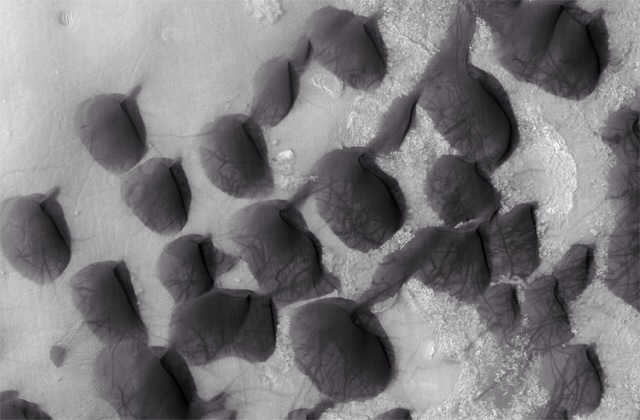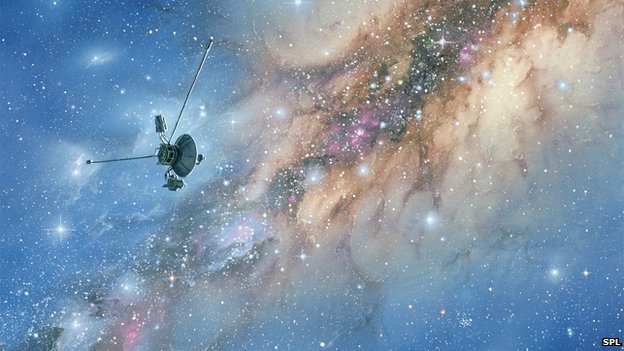
This very fluid-looking collection of barchans is accompanied by a wind-blown ridge in the Hellespontus region of Mars but…

Barchan dunes betray the prevailing wind direction. In this case, the prevailing wind is traveling from bottom right to top left; the steep slope of material (plus dune “horns”) point to the downwind direction. The HiRISE camera monitors barchans to see if they move between observing opportunities, thereby revealing their speed of motion across the Martian plains.

These slug-like dark dunes are striking examples of “dome dunes” — elliptical accumulations of fine material with no-slip surfaces. These domes contrast greatly with the often jagged appearance of barchan dunes. Found at the bottom of Proctor Crater, they are darker than the surrounding crater floor as they are composed of dark basaltic sand that was transported by the wind.

Mars plays host to a huge number of dune fields — regions where fine wind-blown material gets deposited to form arguably some of the most beautiful dunes that can be found on any planetary body in the solar system. Using the powerful High-Resolution Imaging Science Experiment (HiRISE) camera on board NASA’s Mars Reconnaissance Orbiter, planetary scientists have an orbital view on these features that aid our understanding of aeolian (wind-formed) processes and Martian geology.

Dome-shaped dunes and barchans seem to “reach out” and touch their downwind partners with slumped material.
NASA/JPL-CALTECH/UNIVERSITY OF ARIZONA
Originally posted 2014-01-16 23:03:06. Republished by Blog Post Promoter

![20140116-235819[1]](https://coolinterestingnews.com/wp-content/uploads/2014/01/20140116-2358191.jpg)










